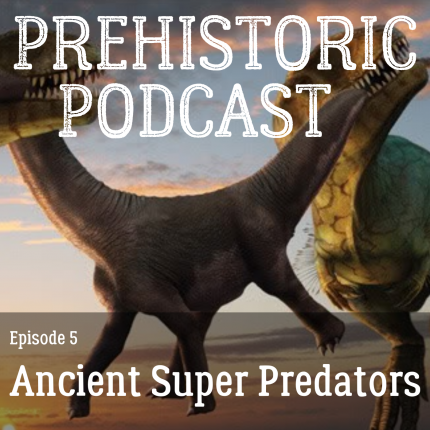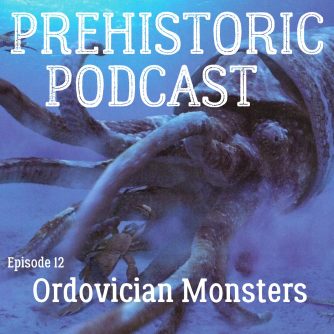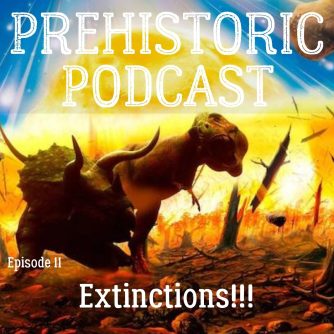Ancient Predators of the Mesozoic
Family: Dilophosauridae
Featured Dino: Dilophosaurus
Other Dinos: Dracovenator
Size: Medium
Weight: 880 Pounds
When did it live: Early Jurassic
Appearance:
How did it kill:
A kink in its upper jaw meant that it attacked by gripping and holding onto prey like a modern croc. It had a notch in its upper jaw which was meant to keep prey from escaping.
- Snap prey with front jaws. Like a crock it would have a powerful bite with it’s front jaws
- It could have delivered several slashing bites to pretty or clamped on
- The prey would then be moved further back in the jaws where the BIG teeth were located
- The prey would be killed with slicking bites (again similar to crocs) and sideways facing teeth
Did it hunt in packs: Maybe but if it did, they were probably small in size consisting of only a few members
What did it hunt
Initially it was thought it was a piscivore / scavenger but paleontologists now think it probably had the equipment to hunt larger game
The true diet is unknown; it is assumed that the animal had probably a mixed diet of both terrestrial and aquatic prey; similar to spinosaurids, as its speculated to be large enough to hunt large prosauropods as well as smaller dinosaurs including the local species of
It also probably did predate on small mammals and fish in addition.
It was also likely a cannibal when it scavenged. Fossils are found with Dilophosaurus bite marks
Family: Ceratosauridae
Featured Dino: Ceratosaurus
Other Dinos: Genusaurus,Tarascosaurus, Ozraptor
Size: Medium
Weight: 2000 Pounds
When did it live: Late Jurassic
Appearance:
Found alongside Allosaurus fossils but Allosaurus outnumbered it about 7:1
How did it kill?
It’s teeth were comparable to a wolf. Long teeth would be used as fangs to make really fast bites. It’s bite force would be concentrated because it had a narrow skull.
It evolved long fangs due to competition with Allosaurus. Both species preferred to eat different parts of dead animals when scavenging. It’s fangs could be over 9 centimeters long
Did it hunt in packs? It is a more rare fossil to find, however there isn’t current evidence to support this.
What did it hunt?
- Crocs
- Turtles
- Lungfish
- Scavenged as well
Family: Dromaeosauridae
Featured Dino: Velociraptor
Other Dinos:Deinonychus, utahraptor, dromaeosaurus
Size: Small
Weight: 33 Pounds
When did it live: Late Cretaceous
Appearance:
How did it kill?
It would use it’s distinctive claw to pierce the throat of it’s victims. Ripping out the jugular vein or carotid artery rather than slashing the belly
The inside of it’s claw was rounded which would indicate it didn’t slash but rather pierced it’s prey.
The types of prey species it attacked would be difficult to slash due to having thick skin.
One popular theory suggests that Dromeosaurs, including velociraptor may have used “Raptor Prey Restraint” model which would be similar to modern birds like hawks and eagles who have similar claws and attack styles
- leap on the prey,
- pin it down,
- grip it with the sickle claws
- feed on the animal while it was still alive!
It had a saw like beak and used saw motion like bites similar to modern day komodo dragon. It would use it’s beak mainly to finish off prey if it’s kicks weren’t enough.
It was an excellent tracker, agile and swift
Did it hunt in packs? UNKNOWN A closely related raptor deinonychus has been found in groups. Deinonychus was found in association with an Ornithopod Tenontosaurs
No direct evidence shows velociraptor hunting in a pack at this time… but we can infer that it could be a good possibility with evidence of other Dromeousar footprints and fossil evidence supporting pack behavior in the family
What did it hunt?
A famous fossil “ Fighting Dinosaurs” shows it in direct combat with Protoceratops, but later it was hypothesized that the 2 animals may have drowned. We do believe currently that protoceratops was on the menu!
It ate a wide variety of animals like lizards, mammals, and also would single out and hunt small and/or young dinosaurs of any variety it could take down.
It also scavenged much like almost all other predatory therapods
Example prey: Homalocephale (herbivore)
- Family: Allosauridae
- Featured Dino: Allosaurus
- Other Dinos: —
- Size: Medium
- Weight: 5000 Pounds (2.3 metric tons)
When did it live: Late Jurassic – Early Cretaceous
Appearance:
How did it kill?
It had a killing style similar to saber tooth carnivores of the Cenozoic era.
IT could open it’s jaws extremely wide. Because it had a reduction in jaw and neck muscles for this purpose.
Allosaurs did not have saber teeth. It is thought it would attack by using it’s mouth like a hammer and drive it’s entire upper jaw down on a prey animal and then rake the animal leaving big wounds. It would weaken it’s victims and let them succumb to their wounds while it stalked them and stayed out of danger.
It was an ambush predator most likely
Another theory thinks Allosaurus may have been a “flesh grazer” when dealing with sauropds which would ambush large pretty.. Take a bite of flesh out of it and run off. It wouldn’t need to make an effort to kill the prey as it could sustain itself by grazing.
For an ornithopod it possibly also could pounce on prey and use multiple slashing bites on the throat.. Similar to a big cat attack in modern big cats.
Allosaurus could run up to 34 miles per hour
Did it hunt in packs?
MAYBE but it is uncertain, however there is evidence for cannabilism so opposing thoughts are that allosaurus are drawn to prey areas and kill each other fighting over the prey, and that’s why groups are found.
What did it hunt?
ornithopods, stegosaurids, and sauropods.
There is a lot of evidence supporting Stegosaurus being a main prey animal. They have found allosaurus with stegosaurs tail punctures in it.
It was also a cannibal
Apatosaurus
Diplodocus
Camarasaurus
Family: Abelisauridae
Featured Dino: Carnotaurus
Other Dinos: Majungasaurus, Abelisaurus, Quilmesaurus
Size: Medium
Weight: 3000 Pounds
When did it live: Late Cretaceous
Appearance:
How it killed?
Quick but not strong bites. Had an elastic jaw similar to modern snakes. May have swallowed small prey whole.
It could project its teeth forward and then spike smaller prey.. It’s backward projecting teeth would have prevent prey from escaping.
It may still have been able to hunt larger dinosaurs. It’s bite force was 2x an american alligator.
It most likely also used an ambush and wound technique similar to other predators on this list. They speculate it was a patient killer who could wait hours to make a kill.
Top speed of 30MPH
Did it hunt in packs? Unknown – Could have hunted in small packs of 2 to 3
What did it eat?
Small game and larger sauropods like titanosaurus
Family: Carcharodontosauridae
Featured Dino: Giganotosaurus
Other Dinos: Mapusaurus, Tyrannotitan, Carcharodontosaurus
Size: Large
Weight: 14,000 Pounds (6 to 8 metric tons)
When did it live: Late Cretaceous
Appearance:
How did it kill?
It had massive saw like teeth. It has a muscle adaptations that were focused on the speed of it’s bite. The lower jaws were adapted to make slicing bites. It most likely captured and then bit it’s pretty to death.
It was thought to leave toxic bacteria in it’s wounds.
Similar to an allosaurs it may have been a flesh grazer and it may have wounded prey and let them succumb on their own instead of finishing them off.
Did it hunt in packs?
Most likely. In 2006 a bonebed was analyzed and the ages of the Mapusaurus (a close relative) fossils found were consistent with pack hunting.
What did it eat?
They were generalized predators. They actively hunted any pretty smaller than they were including juvenile sauropods, other predators, members of their own species
In packs they also would likely attempt to take down larger sauropods
Family: Spinosauridae
Featured Dino: Spinosaurus
Other Dinos: Baryonyx, Irritator
Size: Large
Weight: 14,000 Pounds (6 to 8 metric tons)
When did it live: Late Cretaceous
Appearance:
How did it kill?
Recent fossils show a tail spine that is believed to have propelled it through the water.
Spinosaurus was able to hold its snout at the surface of the water and had special sensors in its snout to detect pretty without being able to see them.
Spinosaurus actively pursued prey in the water using it’s tail propulsion to hunt them down and it’s Crocodilian mouth to take them down like a modern croc
Another viewpoint is spinosaurus may have spent time on the shorelines and hunted pretty more similar to a stork by jabbing its head in the water, however with the recent fossil evidence showing all the swimming adaptations this is losing popularity.
It could have been a quadruped when on land similar to dimetrodon, although it is more often depicted as bipedal.
Did it hunt in packs?
No evidence supports a spinosaurus hunting in packs
What did it eat?
It was most likely generally an piscovre but could was also be an opportunist when other prey presented itself. It was at least semi-aquatic
- Sawfish
- Other fish
- Crocs
- Occasionally preyed on pterosaurs
- Sharks
- Giant coelacanths
- Baryonx was found with Juvenile dinosaurs such as iguanodon
Family: Tyrannosauridae
Featured Dino: Tyrannosaurus Rex
Other Dinos: Nanuqsaurus, Tarbosaurus, Lynthronax, Yutyrannus
Size: Large
Weight: 19,000 Pounds (7 to 9+ metric tons)
When did it live: Late Cretaceous
Appearance:
How did it kill?
Well known for having the largest bite force of any known land predator. It’s bite could crush bones and pierce armored dinosaurs.
It had a highly developed and advanced sense of smell and sight compared to other predators.
It wasn’t particularly fast but it was faster than most of its prey
It would use it’s bite force to pierce prey and crush their bones. It also used its ability to crush bones to extract nutrition from bone marrow on carcass remnants.
They would chew on bones like modern day hyenas to extract the marrow.
It could also open it’s jaw very wide.
It could replace its teeth quickly if it lost teeth in an attack.
There were early debates on if it was a pure scavenger, however fossil evidence shows tyrannosaur bite marks that had healed so it was inflicted on live prey so the scavenger theory has lost traction. It was almost definitely an apex predator
It’s saliva may have also been poisonous giving it an infectious bite which is something they noticed by comparing its teeth to komodo dragons living today
It may have killed and torn apart prey head shakes like a modern crock.
Did it hunt in packs?
Fossils from a family of drowned tyrannosaurs suggest they may have hunted in family packs like modern wolves. These packs may have been matriarcal in nature (female led)
What did it eat?
Hadrosaurs, Ceratopsians, Ankylosaurus, Sauropods such as Alamosaurus, Other tyrannosaurs





